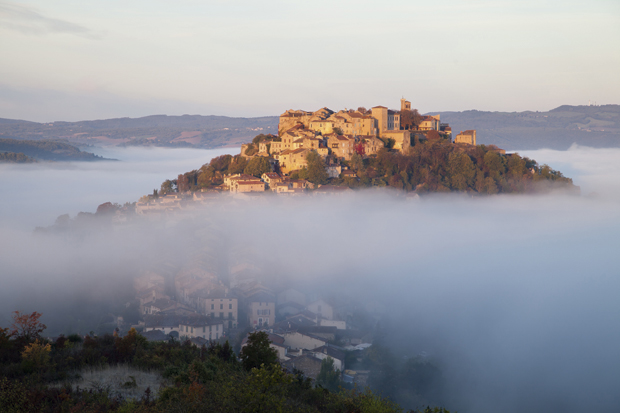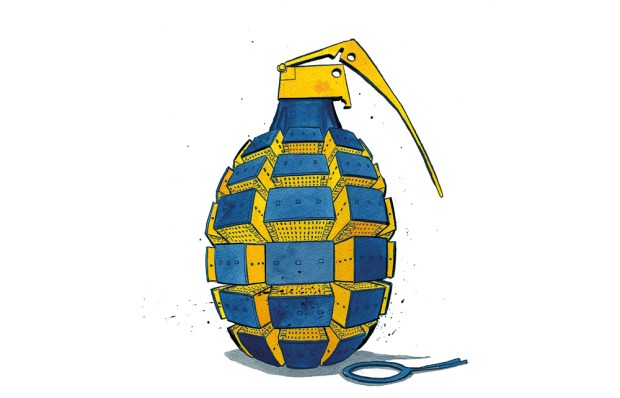Why didn’t I know about the Tarn Valley? I’d often been right next door. But here, north-east of Toulouse, between the baking fields of Gers and the rocky mountains around Carcassonne, is this best-kept secret. It’s a lush region of great rivers, rolling green hills and towns with magnificent red-brick gothic architecture and is sometimes referred to as the Triangle d’Or (mostly by estate agents). The sea is three hours away in either direction, which is a boon, meaning that even in August it was eerily devoid of tourists.
If the points on the triangle are the towns of Gaillac, Albi and Cordes sur Ciel, in between are any number of really beautiful bastide villages. We were staying near Gaillac, which is pretty low-key, a proper working town best known for its local wines — it has its own appellation. There’s no major draw for sightseers but it is very attractive. The first thing you see as you drive in over the bridge is the 13th-century church of St Michel, a soaring pink edifice of Romanesque brick. There was an abbey here, which is now a maison des vins and tourist office, and the old streets behind the church are ancient and winding, lined by overhanging houses with timber beam and herringbone brick facades. There is a cobbled colonnaded square with a fountain. And skirting the town like an immense moat is the Tarn, edged by densely wooded banks and crisscrossed by dragonflies.
Follow the river and you get to Albi, which people know about because of its extraordinary cathedral, built in the 13th century to put the stamp of Catholicism on the city following the Albigensian crusade against the Cathars. It is ridiculously imposing, built entirely of hot red brick, set in a vast square and flanked by the equally formidable Berbie Palace. This is now the Toulouse-Lautrec museum, and houses an extremely comprehensive collection of paintings by Albi’s most famous son.
As the heatwave built over the course of the week, we gave up on going places and spent our days at a bathing lake in a quiet green valley. There were children and the way to keep them nice was to put them in water. The lake was an adorable place — boats, frogs, a sandy beach and a splash slide — delightfully well run, as you might expect, but with eccentric opening hours, as you might also expect. After a few hours cooling down we’d venture to the nearby bastide towns for a drink or dinner — Castelnau de Montmiral, Puycelsi, Bruniquel. All lovely, all empty. Where was everyone?
The answer is that they were in Cordes sur Ciel, as became clear when we went there on the last day. This hilltop town is like a French Glastonbury — full of new age crystal healers and artists — crossed with a medieval theme park. It’s beautifully restored, but all the shops sell soap or toy knights and the streets were thronged with visiting English such as ourselves. It seemed strange, after seeing the deserted bastide villages all around, and it was an unpleasant reminder of our own essential annoyingness, so we scuttled away quickly.
Got something to add? Join the discussion and comment below.
Get 10 issues for just $10
Subscribe to The Spectator Australia today for the next 10 magazine issues, plus full online access, for just $10.
The Spectator's Shiva Naipaul Memorial Prize for unconventional travel writing is open for entries. The winner gets £2,000 and the winning essay is published in our special Christmas issue. Click here for more details.
You might disagree with half of it, but you’ll enjoy reading all of it. Try your first month for free, then just $2 a week for the remainder of your first year.














Comments
Don't miss out
Join the conversation with other Spectator Australia readers. Subscribe to leave a comment.
SUBSCRIBEAlready a subscriber? Log in